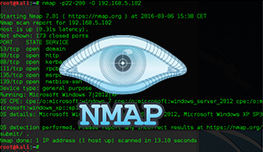TCP/IP suite of protocols
The TCP/IP suite is a set of communications protocols used on computer networks today, most notably on the Internet. It provides an end-to-end connectivity by specifying how data should be packetized, addressed, transmitted, routed and received on a TCP/IP network. This functionality is organized into four abstraction layers and each protocol in the suite resides in a particular layer.
The TCP/IP suite is named after its most important protocols, the Transmission Control Protocol (TCP) and the Internet Protocol (IP). Some of the protocols included in the TCP/IP suite are:
ARP (Address Resolution Protocol) – used to convert an IP address to a MAC address.
IP (Internet Protocol) – used to deliver packets from the source host to the destination host based on the IP addresses.
ICMP (Internet Control Message Protocol) – used to detects and reports network error conditions. Used in ping.
TCP (Transmission Control Protocol) – a connection-oriented protocol that enables reliable data transfer between two computers.
UDP (User Datagram Protocol) – a connectionless protocol for data transfer. Since a session is not created before the data transfer, there is no guarantee of data delivery.
FTP (File Transfer Protocol) – used for file transfers from one host to another.
Telnet (Telecommunications Network) – used to connect and issue commands on a remote computer.
DNS (Domain Name System) – used for host names to the IP address resolution.
HTTP (Hypertext Transfer Protocol) – used to transfer files (text, graphic images, sound, video, and other multimedia files) on the World Wide Web.
The following table shows which protocols reside on which layer of the TCP/IP model:




